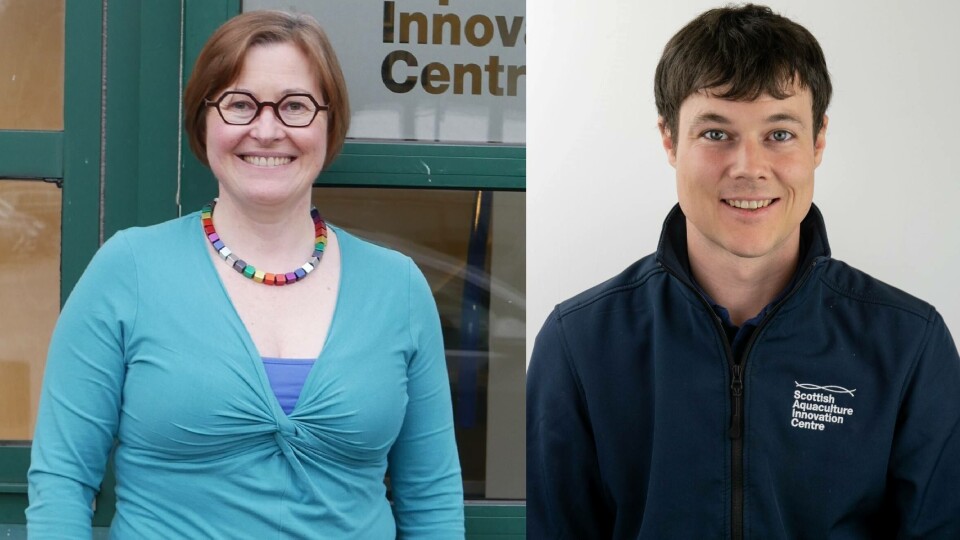
Scaling up IoT in aquaculture could be key to sector success
The Internet of Things (IoT) is playing an increasing role in many areas, including fish farming. In this article, the Scottish Aquaculture Innovation Centre’s chief executive Heather Jones and knowledge exchange officer Sam Houston explain why aquaculture must continue to embrace technology.
Aquaculture is already of huge importance to Scotland, contributing an estimated £1.8 billion annually to the economy. But in order to reach the sector target of doubling that by 2030, technological advances - particularly through applying Internet of Things (IoT) technology - could fuel further growth and development.
Put simply, IoT refers to devices fitted with intelligent sensors that can transmit data to other connected devices over a closed network. This data can then be communicated to the people or systems that require the information for monitoring purposes.

Still a challenge
IoT in aquaculture is not a new concept: sensors and cameras are already being built into new aquaculture equipment and in Scotland, IoT is being used for innovative projects on fish farms. However, deployment of IoT technologies in remote areas like those where marine aquaculture is practiced in Scotland is still a challenge where information needs to be sent elsewhere in the world or acquired from sensors remote to the main fish farm.
Glasgow-based R3-IoT is one such emergent company that uses new approaches to satellite technology to efficiently and cost-effectively transmit data about conditions in specific pens from remote fish farms to the cloud. Previously, this task would have required a member of staff to physically visit a site and manually collect and upload the data on to a digital platform – taking up valuable time and resource.
The kind of data sensors can collect – from water temperature to condition of the nets – is essential in helping fish farmers and senior managers make operational decisions about the farm environment, harvest timings, health status of the fish, or feeding levels.
Three key benefits
Information gleaned from sensors could also be key to tackling some of the sector’s most pressing challenges, including global issues like improving fish health through better monitoring of stock. While these concerns affect some farms more than others, finding solutions is in the interest of everyone, whether that is to eliminate the risk of suffocation due to low oxygen levels, water pollution and unsuitable pen conditions, or parasites and disease.
The benefits of incorporating IoT technology are three-fold. Firstly, the farm environment can be monitored more efficiently and with greater coverage (more sensors across the site’s multiple cages), enabling near real-time corrective measures to be implemented. Secondly, the impacts of the farm on the surrounding environment can be followed more closely, allowing for better environmental management. Thirdly, IoT is a component of machine learning in that data acquired over time can be applied to create predictive models leading to more confident decision-making, timely alerts and automated systems.
By ensuring fish farms are managed with more accurate information, those in charge can make better informed decisions that lead to less waste, fewer diseases and limit the risk of feed damaging the surrounding ecosystem.
From a business perspective, there are also notable advantages. For example, IoT can be used to collect real-time information on biomass – the weight and length of a fish – to monitor growth and alter feeding levels accordingly. Systems that record sea lice levels remotely, without the need to handle fish, reduce the need for staff to visit sites – improving health and safety within the business and minimising expenditure on travel.
Scalability made possible
The next IoT consideration for the industry is a question of scale. Although the core processes are already established, there are still opportunities around scaling up the technology, refining systems to ensure better quality data can be harvested, and connecting currently disparate sources of data to make it more readily available for analysis and insight gathering. This could, and should, be sent in real-time to the wider business, including high-level decision-makers whether they are in Scotland, Norway or Canada. Technologies like R3-IoT’s communications technology make scalability possible in the remote regions typical in aquaculture.
Of course, as with any technology, IoT does not come without its challenges. Security and resilience are critical and, moving forward, additional capabilities will need to be built into the beginning of the process, rather than as an afterthought. Failing to do so could leave networks and data vulnerable to hacking or cyber-attack.
The aquaculture sector plays a crucial role in the Scottish economy, and every effort should be made to streamline processes and increase efficiency while improving fish welfare. IoT has an important part to play in this, and it is incumbent on all of those in the sector to embrace and encourage technological innovations that will lead to an even more prosperous and sustainable future.























































